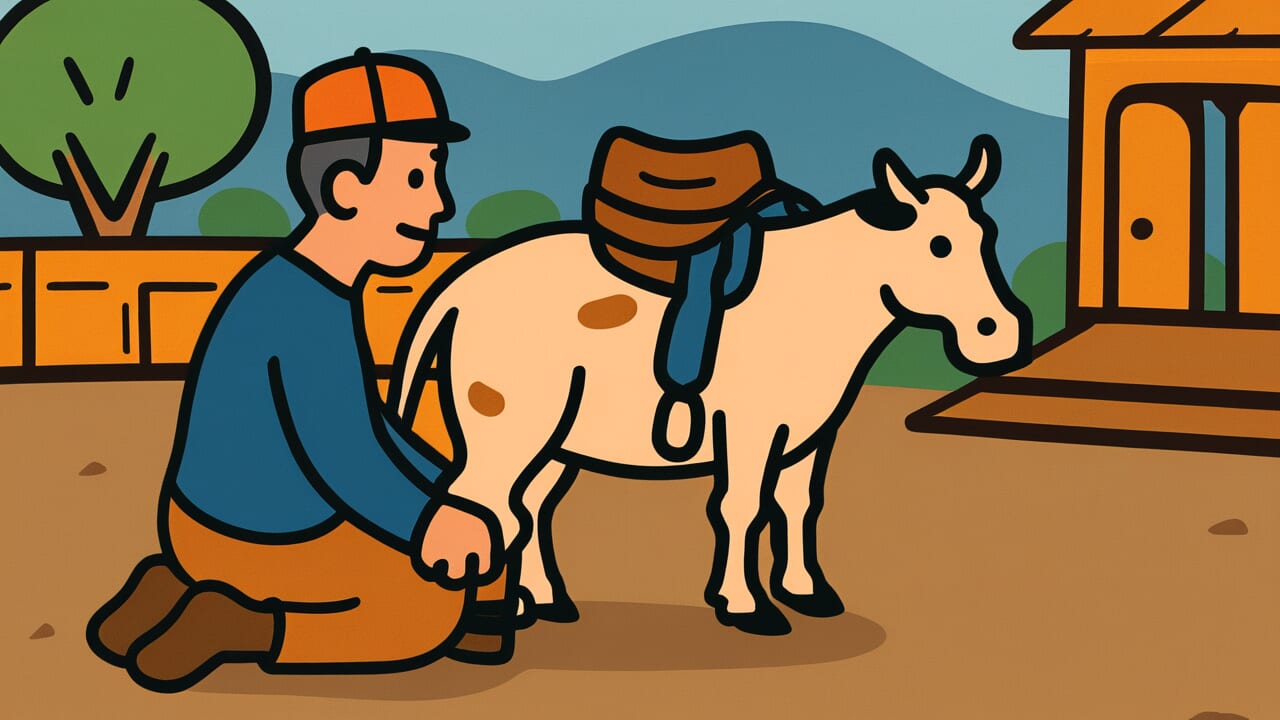How to Read “Until you can ride a horse, ride a cow”
Uma ni noru made wa ushi ni nore
Meaning of “Until you can ride a horse, ride a cow”
This proverb teaches that to reach high goals, you should start from basic stages and progress steadily. It emphasizes the importance of beginning with easier tasks and gradually raising your level, rather than jumping straight into difficult challenges.
People use this saying when advising someone who is rushing to tackle advanced tasks. They suggest focusing on fundamentals first.
This lesson applies to many situations. Learning new skills, preparing for certification exams, or setting big business goals all benefit from this wisdom.
The proverb works because it uses familiar animal imagery to convey the danger of skipping steps. Everyone knows horses and cows, making the importance of foundations immediately clear.
Even today, the truth remains that nothing succeeds through shortcuts. Steady accumulation ultimately leads to great results. This timeless wisdom lives on in the proverb.
Origin and Etymology
The exact source of this proverb is unclear, but its structure reveals an interesting background.
The contrast between horses and cows forms the heart of this saying. Throughout Japanese history, horses were closely tied to the samurai class.
Horsemanship was considered a martial art. Riding horses required advanced skills and was a special ability. Cows, on the other hand, were familiar animals essential for farming. They moved gently and were easy to handle.
This contrast contains a universal lesson about learning in stages. Horses are taller than cows and move more quickly and unpredictably.
Someone without riding experience faces high risk of falling if they try horses immediately. Cows move slowly, making them relatively safe for beginners to handle.
The proverb may have originated from actual riding training practices. When samurai children learned horsemanship, they might have first ridden cows to learn balance and the feeling of being on an animal’s back.
Only after this preparation would they move to actual horse training. Such concrete experience likely evolved into a broader life lesson about the importance of gradual learning.
Usage Examples
- If you want to learn programming, “until you can ride a horse, ride a cow” – start with a simple language first
- Rather than jumping straight to difficult certifications, let’s follow “until you can ride a horse, ride a cow” and get basic qualifications first
Universal Wisdom
Humans naturally want shortcuts. The desire to skip the process of effort and grab results immediately is a timeless human trait. This proverb has endured because it recognizes this human weakness.
Why do people want to skip stages? Because the steady work of building foundations is boring and progress seems invisible.
Only the glamorous image of success catches our eye. We become blind to the unglamorous accumulation that leads there.
But if you aim high while neglecting basics, you will inevitably fall. This is just like falling from a horse – you’re the one who gets hurt.
The deep wisdom here teaches us how to avoid failure. Our ancestors watched many people fail by skipping steps. And they realized something important.
The shortest path to success is actually the steady road that looks like a detour.
You don’t need to feel ashamed of riding a cow. It’s necessary preparation for riding a horse, never wasted time.
Valuing your current stage is actually the wisest choice. This universal truth lives in the proverb.
When AI Hears This
This proverb contains the optimal solution for decision-making that mathematicians spent centuries proving.
In optimal stopping theory, there’s a problem called the “secretary problem.” When choosing the best secretary from 100 applicants, with the condition that you can’t go back once you reject someone, how many should you pass before choosing?
The answer is about 37 people, or 37% of the total. Spend this proportion purely on data collection, then select the first person who appears who is “the best so far.”
This maximizes your probability of getting the best candidate.
This proverb has exactly the same structure. Even with the final goal of a horse, you don’t immediately seek a horse – you ride a cow first.
In other words, it establishes a “stage of accumulating experience with a compromise option.” By riding a cow, you learn about comfort, handling, and necessary techniques.
Without this learning period, you can’t even judge what makes a good horse.
What’s interesting is that the proverb doesn’t say “be satisfied with a cow.” The cow is merely a means for information gathering.
Like the 37% rule, it ultimately aims for the horse – the best choice. The ancestral wisdom that expressed the mathematical truth that gradual compromise is the shortest route to the optimal solution is truly remarkable.
Lessons for Today
Modern society strongly values instant results. We’re expected to produce outcomes quickly in everything. But this proverb reminds us of something important.
Truly valuable things are built over time.
If you feel you’re at a basic stage right now, that’s nothing to be ashamed of. Rather, it’s a crucial preparation period for future success.
Even if others around you seem to be achieving spectacular results, you don’t need to rush. They too must have done steady groundwork behind the scenes.
Treasure the small steps you can take today. Start with simple tasks and clear them reliably. This repetition eventually becomes great strength.
If you practice riding cows thoroughly, you will certainly be able to ride horses someday.
What matters is not dismissing your current stage, but maintaining an attitude of absorbing everything you can learn from it.
Time spent building foundations is never wasted. It’s an investment in your future.



Comments